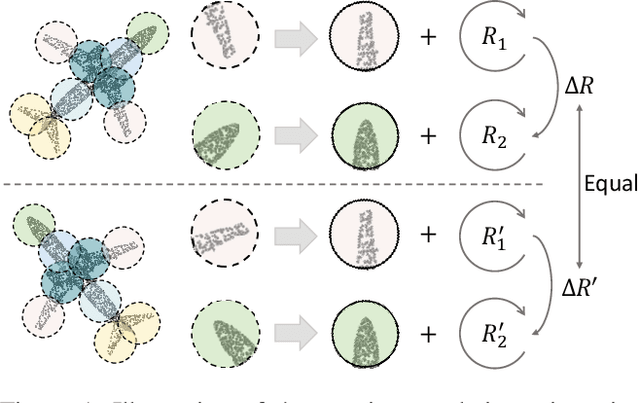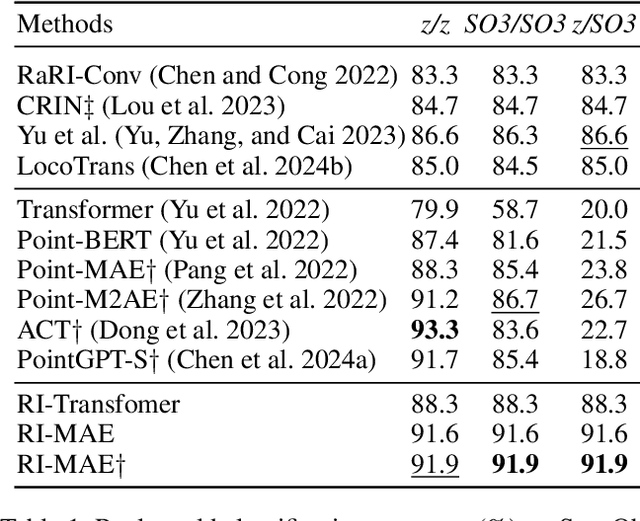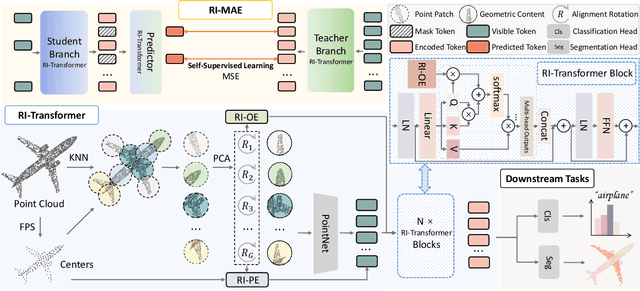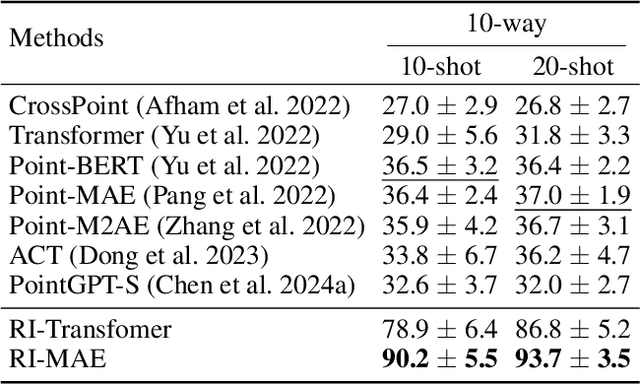Xiaogang Zhu
RI-MAE: Rotation-Invariant Masked AutoEncoders for Self-Supervised Point Cloud Representation Learning
Aug 31, 2024



Abstract:Masked point modeling methods have recently achieved great success in self-supervised learning for point cloud data. However, these methods are sensitive to rotations and often exhibit sharp performance drops when encountering rotational variations. In this paper, we propose a novel Rotation-Invariant Masked AutoEncoders (RI-MAE) to address two major challenges: 1) achieving rotation-invariant latent representations, and 2) facilitating self-supervised reconstruction in a rotation-invariant manner. For the first challenge, we introduce RI-Transformer, which features disentangled geometry content, rotation-invariant relative orientation and position embedding mechanisms for constructing rotation-invariant point cloud latent space. For the second challenge, a novel dual-branch student-teacher architecture is devised. It enables the self-supervised learning via the reconstruction of masked patches within the learned rotation-invariant latent space. Each branch is based on an RI-Transformer, and they are connected with an additional RI-Transformer predictor. The teacher encodes all point patches, while the student solely encodes unmasked ones. Finally, the predictor predicts the latent features of the masked patches using the output latent embeddings from the student, supervised by the outputs from the teacher. Extensive experiments demonstrate that our method is robust to rotations, achieving the state-of-the-art performance on various downstream tasks.
DeFuzz: Deep Learning Guided Directed Fuzzing
Oct 23, 2020



Abstract:Fuzzing is one of the most effective technique to identify potential software vulnerabilities. Most of the fuzzers aim to improve the code coverage, and there is lack of directedness (e.g., fuzz the specified path in a software). In this paper, we proposed a deep learning (DL) guided directed fuzzing for software vulnerability detection, named DeFuzz. DeFuzz includes two main schemes: (1) we employ a pre-trained DL prediction model to identify the potentially vulnerable functions and the locations (i.e., vulnerable addresses). Precisely, we employ Bidirectional-LSTM (BiLSTM) to identify attention words, and the vulnerabilities are associated with these attention words in functions. (2) then we employ directly fuzzing to fuzz the potential vulnerabilities by generating inputs that tend to arrive the predicted locations. To evaluate the effectiveness and practical of the proposed DeFuzz technique, we have conducted experiments on real-world data sets. Experimental results show that our DeFuzz can discover coverage more and faster than AFL. Moreover, DeFuzz exposes 43 more bugs than AFL on real-world applications.
 Add to Chrome
Add to Chrome Add to Firefox
Add to Firefox Add to Edge
Add to Edge